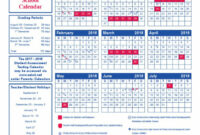Creating Long Articles for SEO: A Comprehensive Guide
To effectively rank in Google search results and achieve your SEO goals, creating long, in-depth articles can be a powerful strategy. Let’s explore what this entails, how to do it, what we know about its effectiveness, and how it relates to a specific example: the Foxborough Public Schools calendar.

What Do You Mean by Long Articles for SEO?
Long articles, often referred to as long-form content, are comprehensive pieces of content that delve deeply into a particular topic. While the exact word count can vary, they generally exceed 1,000 words and can often range from 2,000 to over 4,000 words. The key characteristic isn’t just the length, but the depth and comprehensiveness of the information provided.
How Long Articles Help with SEO
Long-form content offers several significant advantages for Search Engine Optimization (SEO):
Enhanced Keyword Targeting: Longer articles naturally incorporate a wider range of keywords, including long-tail keywords (longer, more specific search phrases). This increases the chances of ranking for various relevant queries. For example, instead of just targeting “school calendar,” a long article about the Foxborough Public Schools calendar could also target “Foxborough school holidays 2025,” “Foxborough teacher professional development days,” or “Foxborough early release dates.”
How to Create Long Articles for SEO
Creating effective long-form SEO articles requires a strategic approach:
1. Choose the Right Topic: Select a topic that warrants in-depth discussion and aligns with your target audience’s interests and search queries. Ensure there’s enough scope to write a substantial article. For instance, “school calendar” is a broad topic, but “understanding the Foxborough Public Schools calendar for the 2024-2025 school year” is more specific and allows for detailed information.
2. Conduct Thorough Keyword Research: Identify the primary keyword and related keywords (including long-tail variations) that your target audience uses. Tools like Google Keyword Planner, Ahrefs, or SEMrush can be helpful. Integrate these keywords naturally throughout your article, including in headings, subheadings, and body text.
3. Understand Search Intent: Determine what users are looking for when they search for your target keywords. Are they seeking information, a step-by-step guide, a comparison, or something else? Tailor your content to match this intent. For the Foxborough school calendar, users are likely looking for specific dates, holidays, early releases, and professional development days.
4. Create a Detailed Outline: Structure your article logically with clear headings (H2, H3, etc.) and subheadings. This improves readability and helps search engines understand the content’s organization. A table of contents can be beneficial for longer articles, allowing readers to jump to specific sections. For the Foxborough calendar, sections could include “Key Dates,” “Holidays and Breaks,” “Early Release Days,” “Professional Development Days,” and “Important Notes.”
5. Write High-Quality, In-Depth Content: Focus on providing valuable, accurate, and engaging information. Expand on each point with explanations, examples, and supporting details. Answer potential follow-up questions that a reader might have. Avoid fluff and ensure every section contributes meaningfully to the overall topic.
6. Incorporate Visuals: Break up long blocks of text with relevant images, videos, infographics, or charts. Visuals can enhance understanding, improve engagement, and make the content more appealing. For the school calendar, embedding a PDF of the official calendar or using a table to summarize key dates would be beneficial.
7. Optimize for Readability: Use clear and concise language, short paragraphs, bullet points, and numbered lists to make your article easy to read and scan. Proper formatting improves user experience.
8. Include Internal and External Links: Link to other relevant pages on your website (internal links) to keep users engaged and improve site navigation. Also, link to authoritative external sources to support your claims and provide additional value to readers. When discussing specific school policies, linking to the official Foxborough Public Schools website would be appropriate.
9. Add a Compelling Introduction and Conclusion: Start with an engaging introduction that hooks the reader and clearly states what the article will cover. End with a strong conclusion that summarizes the key points and potentially includes a call to action.
10. Optimize Meta Descriptions and Titles: Craft compelling meta descriptions and titles that accurately reflect the content of your article and encourage clicks from search engine results pages (SERPs). Include your primary keyword naturally.
11. Promote Your Article: Once published, promote your long-form content on social media, email newsletters, and other relevant channels to increase its visibility.
What is Known About the Effectiveness of Long Articles
Extensive research and numerous case studies indicate that long-form content is generally more effective for SEO compared to shorter articles:
Higher Search Engine Rankings: Studies have consistently shown a correlation between longer word counts and higher rankings in Google’s search results. Comprehensive content is often seen as more valuable and authoritative.
However, it’s crucial to remember that quality always trumps quantity. A long, rambling article filled with irrelevant information will not perform well. The length should be justified by the depth and value of the content provided.
Solution: Applying Long-Form Strategy to the Foxborough Public Schools Calendar
Let’s consider how to create a long-form SEO article about the Foxborough Public Schools calendar:
Key Dates at a Glance: A summary table of important dates, such as the first and last days of school, term endings, and graduation.
Information About the Foxborough Public Schools Calendar
Based on the provided search results for Foxborough Public Schools Calendar 2024-2025:
The 2024-2025 school year calendar has been approved as of January 23, 2024.
This information can be organized and expanded upon within the long-form article about the Foxborough Public Schools calendar, providing a valuable resource for the community.
Conclusion
Creating long, in-depth articles is a valuable strategy for improving your website’s SEO performance and ranking higher in Google search results. By thoroughly covering a topic, targeting a wider range of keywords, increasing user engagement, and attracting backlinks, long-form content can establish your site as an authority and drive more organic traffic. When applied to a specific topic like the Foxborough Public Schools calendar, a comprehensive article that details key dates, holidays, and other important information can serve as a valuable resource for the community while also enhancing the school district’s online presence. Remember that the key to successful long-form content is providing high-quality, accurate, and engaging information that meets the needs and search intent of your target audience.

![Grand Prairie GPISD School District Calendar - [PDF] - EduCounty](https://calendaron2017.com/wp-content/uploads/2025/05/grand-prairie-gpisd-school-district-calendar-pdf-educounty-200x135.jpg)
